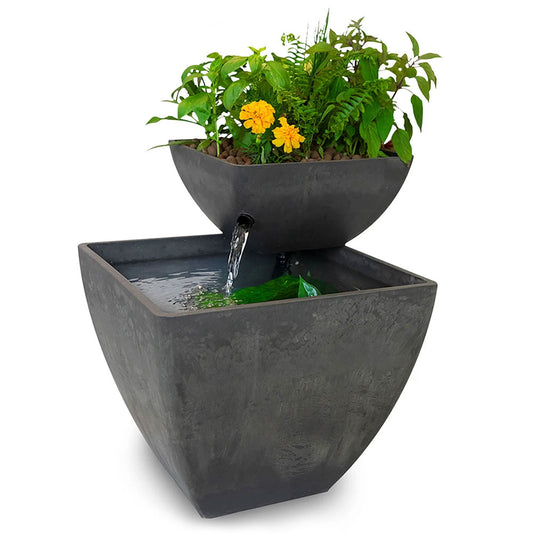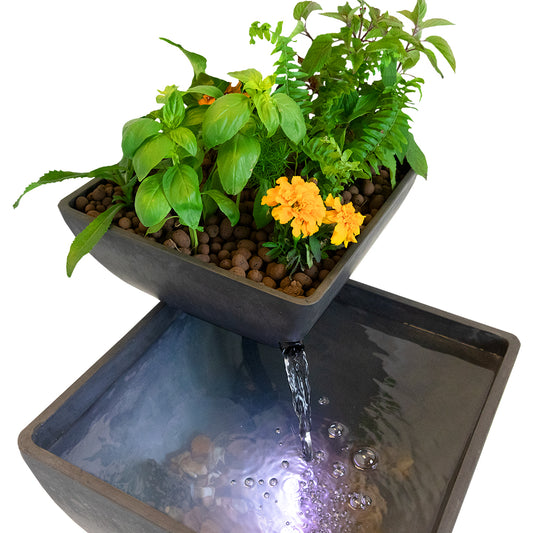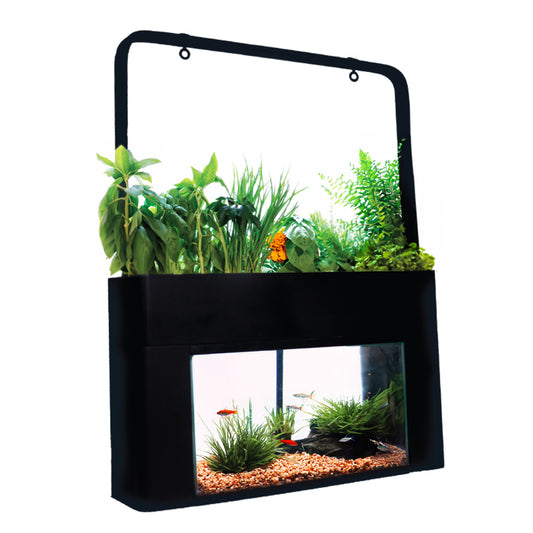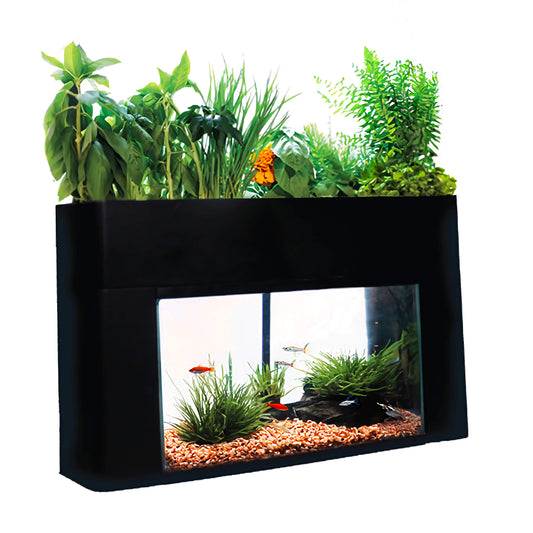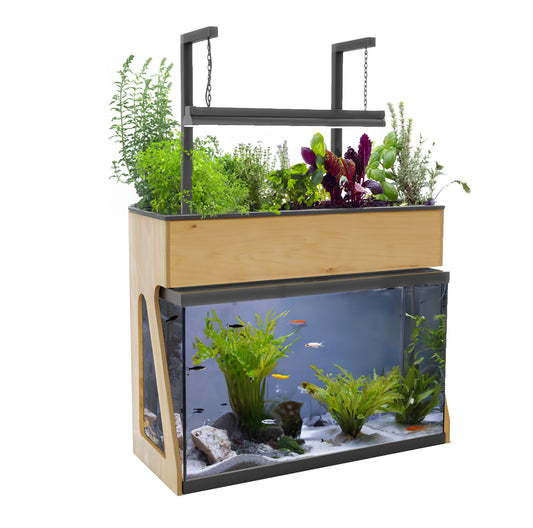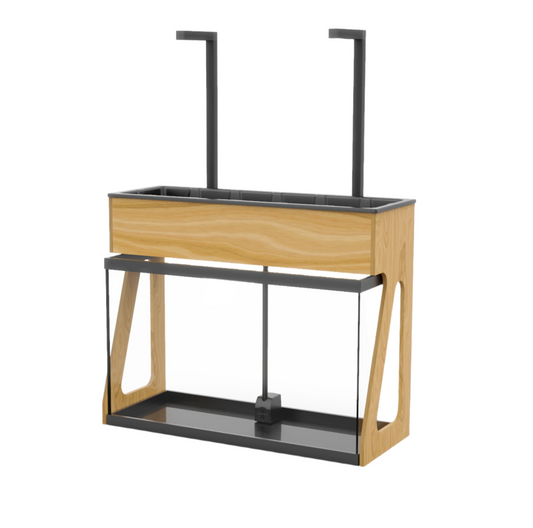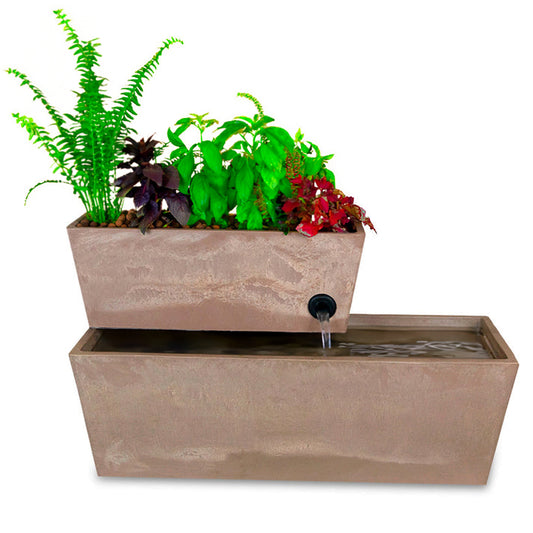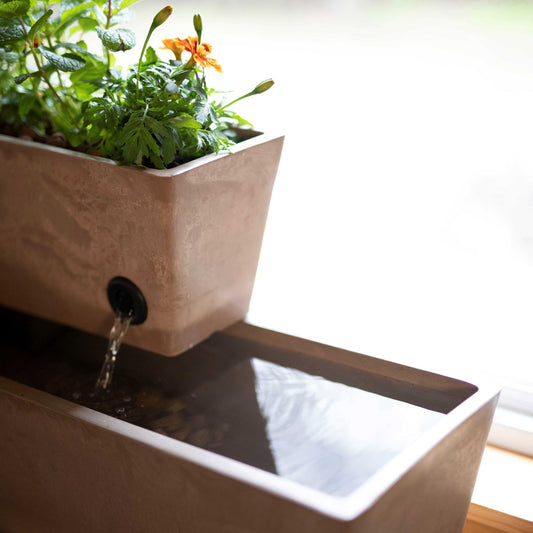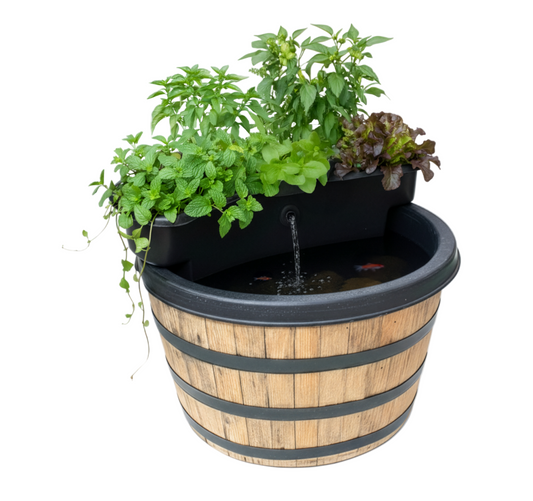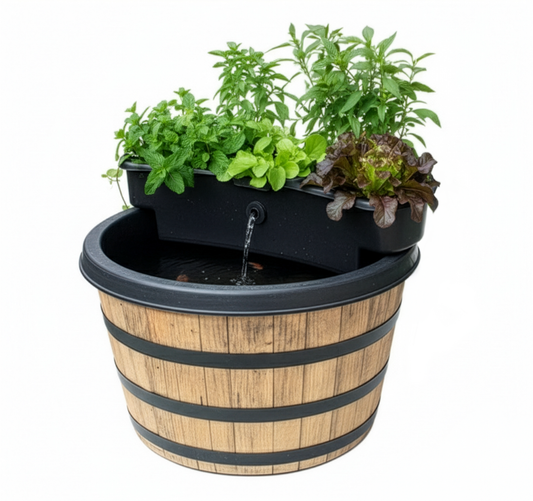Aquaponics in the Classroom: A Teacher's Guide to Educational Benefits
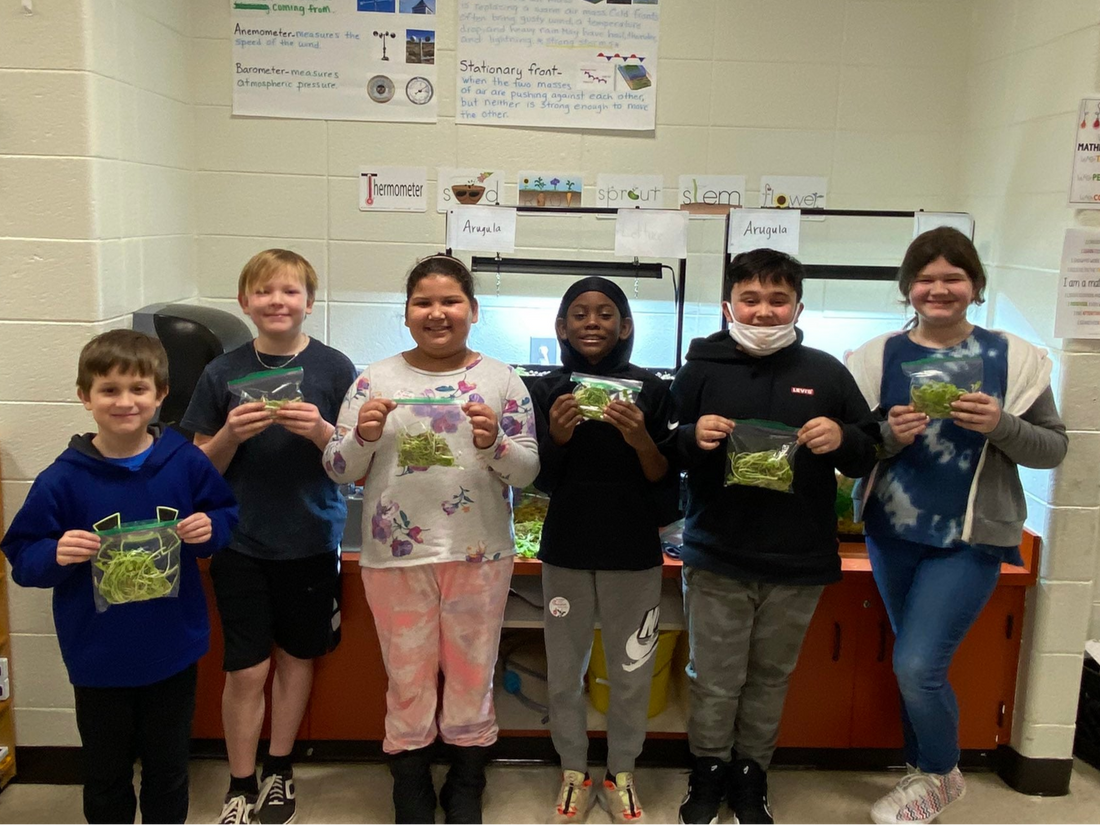
Imagine a learning environment where students eagerly arrive each morning to check on growing plants and swimming fish, where complex scientific concepts become tangible through daily observation, and where responsibility and environmental stewardship are naturally cultivated. This is the reality of classrooms that incorporate aquaponics systems into their educational approach.
Aquaponics—the combination of aquaculture (raising fish) and hydroponics (growing plants without soil)—creates a living ecosystem that serves as an unparalleled educational tool. As fish provide nutrients for plants and plants clean the water for fish, students witness a perfect example of symbiotic relationships and sustainable food production in action.
For educators seeking innovative ways to engage students in STEM subjects, develop critical thinking skills, and foster environmental awareness, classroom aquaponics offers a versatile, hands-on learning platform that addresses multiple educational standards while captivating student interest.
In this comprehensive guide, we'll explore the multifaceted educational benefits of aquaponics, provide practical advice for classroom implementation, and share success stories from educators who have transformed their teaching through this innovative approach. Whether you're teaching elementary, middle, or high school students, aquaponics can become a centerpiece of cross-curricular learning that students will remember long after the school year ends.
STEM Learning Opportunities
Aquaponics systems naturally integrate all aspects of STEM education (Science, Technology, Engineering, and Mathematics), providing authentic contexts for applying these disciplines to real-world scenarios.
Biology Connections
Aquaponics brings biological concepts to life through daily observation and interaction:
The Nitrogen Cycle
Perhaps the most fundamental biological process in aquaponics, the nitrogen cycle demonstrates how:
- Fish produce ammonia as waste
- Beneficial bacteria convert ammonia to nitrites, then to nitrates
- Plants absorb nitrates as nutrients
- Clean water returns to the fish
Students can test water parameters to track this cycle in real-time, making abstract concepts concrete.
Ecosystems and Interdependence
Aquaponics exemplifies ecosystem dynamics through:
- Producer-consumer relationships
- Nutrient cycling
- Energy transfer
- Ecological balance and homeostasis
Students observe how changes to one component affect the entire system, reinforcing the concept of interdependence.
Plant Biology
Students gain hands-on experience with:
- Germination and plant development
- Photosynthesis and respiration
- Plant anatomy and physiology
- Plant adaptations to aquatic environments
- Factors affecting plant growth
Animal Biology
Fish in the system provide opportunities to study:
- Anatomy and physiology of aquatic organisms
- Behavioral patterns
- Growth and development
- Adaptation to environmental conditions
Chemistry Applications
Aquaponics systems provide practical applications for chemistry concepts:
Water Chemistry
- pH testing and adjustment
- Understanding acids, bases, and buffers
- Dissolved oxygen measurement
- Nitrogen compounds and transformations
Nutrient Cycles
- Macro and micronutrient requirements
- Chemical transformations in biological systems
- Solubility and nutrient availability
- Relationship between pH and nutrient uptake
Physics Principles
The physical components of aquaponics systems demonstrate important physics concepts:
Water Flow and Dynamics
- Gravity-fed systems and siphon principles
- Pressure and flow rate relationships
- Potential and kinetic energy transformations
Thermodynamics
- Heat transfer in water
- Temperature regulation and effects on biological processes
- Energy efficiency in system design
Light Physics
- Light spectrum and plant growth
- Measuring light intensity (PAR)
- Energy conversion in photosynthesis
Engineering Challenges
Aquaponics provides authentic engineering problems for students to solve:
System Design
- Balancing fish and plant ratios
- Optimizing water and energy use
- Designing efficient plumbing systems
- Creating appropriate growing environments
Problem-Solving Opportunities
- Troubleshooting water quality issues
- Developing automated monitoring systems
- Creating backup systems for power outages
- Designing custom components for specific needs
Technology Integration
- Sensor development and implementation
- Data logging and analysis
- Automation through microcontrollers (Arduino, Raspberry Pi)
- 3D printing of custom system components
Mathematics Applications
Aquaponics naturally incorporates mathematical concepts:
Measurement and Calculation
- Volume calculations for tanks and grow beds
- Flow rate determinations
- Concentration measurements (ppm, mg/L)
- Feed ratios and growth rates
Data Analysis
- Graphing water quality parameters over time
- Statistical analysis of growth data
- Identifying correlations between variables
- Predictive modeling of system behavior
Geometry and Spatial Reasoning
- Designing efficient growing layouts
- Calculating surface area to volume ratios
- Optimizing space utilization
Classroom Management of Aquaponics Systems
Successfully integrating aquaponics into your classroom requires thoughtful planning and management. Here's how to create a sustainable educational aquaponics program:
Roles and Responsibilities
Distributing system maintenance among students builds ownership and ensures consistent care:
Student Job Rotations
- Fish Feeders: Responsible for proper feeding amounts and schedules
- Water Testers: Conduct regular water quality tests and record data
- Plant Managers: Monitor plant health, harvest, and replant as needed
- System Technicians: Check equipment functionality and water levels
- Data Recorders: Maintain logs and update digital records
Scheduling Considerations
- Create weekly rotation schedules for student responsibilities
- Develop clear checklists for each role
- Implement sign-off procedures to ensure task completion
- Schedule brief daily maintenance periods (beginning/end of class)
Documentation Systems
Proper record-keeping enhances educational value and system management:
Physical Documentation
- Maintain a dedicated aquaponics journal or logbook
- Create wall charts for daily/weekly task tracking
- Develop data collection sheets for water parameters
- Keep growth measurement records for plants and fish
Digital Documentation
- Shared spreadsheets for collaborative data entry
- Digital photo journals showing system development
- Online dashboards for visualizing trends
- Class blog or website to share progress with parents and community
Classroom Integration Strategies
Maximize learning while minimizing disruption:
Physical Placement
- Position system where it's visible but not in high-traffic areas
- Ensure adequate electrical outlets and water access
- Consider lighting needs (natural and supplemental)
- Place on waterproof flooring or use containment trays
Time Management
- Establish routine maintenance times that don't disrupt instruction
- Create efficient procedures for common tasks
- Use timers and automation where appropriate
- Develop emergency response protocols for system issues
Noise and Distraction Management
- Select quiet pumps and equipment
- Use sound-dampening mats under pumps
- Position air pumps away from teaching areas
- Establish clear rules for system interaction during class time
AquaSprouts Tip: The AquaSprouts Garden is designed specifically for classroom use, with quiet operation and minimal maintenance requirements, making it ideal for educational settings.
Age-Appropriate Activities
Aquaponics can be adapted for students of all ages, with activities tailored to developmental levels and curriculum standards:
Elementary School Projects
Focus on observation, basic concepts, and nurturing responsibilities:
K-2 Activities
- Observation Journals: Draw and describe daily changes in plants and fish
- Basic Measurement: Chart plant growth using non-standard units
- Life Cycles: Document seed germination and fish behavior
- Sensory Exploration: Describe plant textures, smells, and appearances
- Storytelling: Create narratives about the aquaponics ecosystem
Grades 3-5 Activities
- Simple Water Testing: Introduce pH and temperature monitoring
- Comparative Growth: Test different plant varieties in the same system
- Food Web Mapping: Create visual representations of system relationships
- Basic Data Collection: Record and graph plant growth over time
- Seasonal Observations: Note changes in system behavior with seasons
Middle School Experiments
Expand into more complex investigations and system understanding:
Scientific Investigations
- Water Chemistry: Regular testing of ammonia, nitrite, and nitrate levels
- Variable Testing: Investigate effects of light, temperature, or pH on growth
- Nutrient Cycling: Track nitrogen transformation through the system
- Plant Trials: Conduct controlled experiments with different plant varieties
- Fish Behavior Studies: Document responses to environmental changes
Engineering Projects
- System Enhancements: Design and implement improvements
- Automatic Feeders: Create simple mechanical feeding devices
- Water Conservation: Measure and optimize water use efficiency
- Alternative Energy: Incorporate solar power for pumps or lighting
High School Research Opportunities
Develop sophisticated investigations and real-world applications:
Advanced Research Projects
- Microbiology: Study beneficial bacteria populations in the system
- Comparative System Design: Test different aquaponics configurations
- Water Remediation: Investigate plants' ability to remove specific contaminants
- Optimization Studies: Determine ideal fish-to-plant ratios
- Nutrient Analysis: Measure nutrient cycling and deficiencies in aquaponic systems
- Plant Growth Studies: Compare plant growth rates under different lighting, temperatures, or nutrient levels
- Fish Health Monitoring: Assess fish behavior, growth, and disease resistance under varying conditions
- pH and Water Chemistry Stability: Investigate the buffering capacity of different media or system designs
- Alternative Fish Feeds: Test the efficiency of sustainable or homemade fish feed options
- Biofiltration Efficiency: Evaluate different biofilter designs and media for nitrogen conversion
- Carbon Sequestration Potential: Explore how aquaponics contributes to carbon capture and reduced emissions
- Automation and Sensor Integration: Develop smart monitoring systems for aquaponics using Arduino or Raspberry Pi
- Aquaponics and Hydroponics Comparison: Compare plant yield, water use, and sustainability between the two methods
- Energy Use and Sustainability: Investigate ways to reduce energy consumption through renewable energy sources or improved system design

